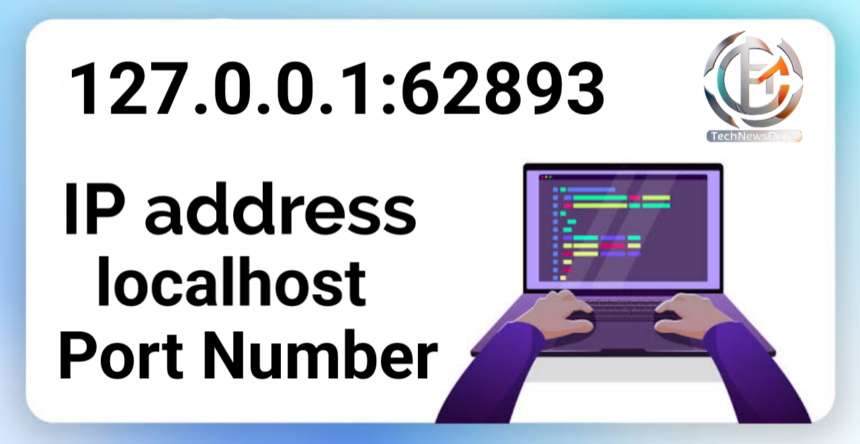In the realm of computer networking, a thorough understanding of IP addresses, port numbers, and protocols is essential for IT professionals, developers, and anyone interested in navigating the digital landscape. One of the most critical elements in this domain is the IP address 127.0.0.1, often referred to as “localhost.” This blog post will guide you through the intricacies of 127.0.0.1 and its associated port number 62893, highlighting their roles and how they intersect with network protocols.
Introduction to 127.0.0.1:62893 IP Addresses and Port Numbers
Navigating the complexities of computer networks often begins with comprehending basic yet fundamental elements like IP addresses and port numbers. These components serve as the digital addresses and entry points that facilitate communication between devices. Let’s kickstart our exploration by understanding what these terms mean and why they matter.
An IP address is like the digital identity of a device on a network, enabling it to send and receive information. On the other hand, port numbers function as doors or channels through which data flows to and from the device. Together, they form the backbone of network communication, ensuring that data packets reach their intended destinations.
For example, 127.0.0.1 is a special IP address often used to test networking software in a local environment. Understanding the significance of these elements not only aids in troubleshooting but also in optimizing network performance.
The Significance of 127.0.0.1 and Localhost
If you’re venturing into networking, you’ll frequently encounter the term “localhost,” which is intrinsically linked to the IP address 127.0.0.1. Let’s break down what these terms mean and why they are indispensable.
Localhost refers to the local computer that a program is running on. It acts as a host name that means “this computer.” When you point to localhost in your web browser or any network application, you’re essentially directing it to the server running on your own machine.
The IP address 127.0.0.1 is a loopback address that routes the information back to the same machine. This setup is incredibly useful for testing and development purposes. For example, developers use localhost to test applications before deploying them to a live server, ensuring everything works smoothly without affecting external users.
Understanding localhost and 127.0.0.1 is crucial for anyone working with network configurations or software development. It simplifies troubleshooting and enhances testing processes, making it easier to identify and fix issues locally before they escalate.
Understanding IP Addresses
IP addresses are the lifeline of network communication, serving as unique identifiers for devices on a network. But what exactly are they, and how do they work? Let’s explore the structure and types of IP addresses.
An IP address consists of a series of numbers separated by periods (for IPv4) or colons (for IPv6). IPv4, the most commonly used version, is made up of four sets of numbers ranging from 0 to 255. For instance, 192.168.1.1 is a typical IPv4 address used in home networks.
IPv6, on the other hand, was introduced to address the limitations of IPv4, primarily the exhaustion of available addresses. An IPv6 address consists of eight groups of four hexadecimal digits, such as 2001:0db8:85a3:0000:0000:8a2e:0370:7334, providing a significantly larger pool of addresses.
Understanding the differences between IPv4 and IPv6 is essential for network configuration and management. While IPv4 is still widely used, the transition to IPv6 is inevitable as the number of connected devices continues to grow.
Deep Dive into Port Numbers
While IP addresses identify devices, port numbers specify the exact process or service on that device. Think of them as extensions to the main address, directing data to the correct application. But what exactly are port numbers, and how do they function?
Port numbers range from 0 to 65535 and are divided into three categories:
- Well-known Ports (0-1023): These are assigned to widely-used services like HTTP (port 80) and HTTPS (port 443).
- Registered Ports (1024-49151): These are assigned to user processes or applications that are not as universally recognized.
- Dynamic or Private Ports (49152-65535): These are typically used by client applications and are assigned dynamically.
For instance, when you browse the internet, your computer connects to the server using port 80 for HTTP or port 443 for HTTPS. These port numbers ensure that data reaches the correct application on the server.
Understanding port numbers is crucial for configuring firewalls, managing network traffic, and troubleshooting connectivity issues. Knowing which ports are open and which are blocked can help secure your network and optimize performance.
Overview of Common Network Protocols
Network protocols are the rules that govern how data is transmitted and received over a network. They ensure that devices can communicate effectively, regardless of their underlying hardware or software. Let’s explore some of the most common protocols and their roles.
TCP (Transmission Control Protocol): TCP is a connection-oriented protocol that ensures reliable data transmission. It establishes a connection between the sender and receiver, verifies that all data packets arrive intact, and reorders them if necessary. This reliability makes TCP ideal for applications like web browsing and email.
UDP (User Datagram Protocol): Unlike TCP, UDP is connectionless and does not guarantee the delivery of data packets. It is faster but less reliable, making it suitable for real-time applications like video streaming and online gaming, where speed is more critical than accuracy.
HTTP/HTTPS (Hypertext Transfer Protocol/Secure Hypertext Transfer Protocol): These protocols are used for transmitting web pages over the internet. While HTTP operates on port 80, HTTPS uses port 443 and adds a layer of security through SSL/TLS encryption.
Understanding these protocols is essential for network configuration, optimization, and security. Different protocols serve different purposes, and knowing when to use each one can significantly impact the performance and reliability of your network.
Practical Usage Scenarios
Knowing the theory is one thing, but how do you apply this knowledge in real-world scenarios? Let’s explore some practical examples of how understanding 127.0.0.1, port numbers, and network protocols can enhance your network management skills.
Testing and Development: Developers often use 127.0.0.1 (localhost) to test applications locally before deploying them to a live server. This practice allows them to identify and fix issues in a controlled environment, ensuring smoother deployments.
Troubleshooting Connectivity Issues: When a network problem arises, understanding how to use tools like ping and traceroute can help diagnose the issue. By pinging 127.0.0.1, you can verify that your network interface card (NIC) is functioning correctly. Traceroute can help identify where data is getting lost or delayed in the network.
Securing Your Network: By configuring firewalls to block or allow specific port numbers, you can control the flow of traffic to and from your network. For example, blocking unused ports can prevent unauthorized access and potential security breaches.
Understanding these practical scenarios can help you apply theoretical knowledge to real-world situations, enhancing your ability to manage and secure your network effectively.
Conclusion
In the complex world of computer networking, a solid understanding of fundamental concepts like IP addresses, port numbers, and network protocols is indispensable. Whether you’re an IT professional, a developer, or simply someone interested in networking, mastering these elements can significantly enhance your skills and capabilities.
From the importance of 127.0.0.1 and localhost in testing environments to the crucial roles of TCP and UDP in data transmission, each concept plays a vital part in ensuring efficient, reliable, and secure network operations. By applying this knowledge practically, you can troubleshoot issues, optimize performance, and secure your network with confidence.
To take your networking skills to the next level, consider signing up for [Your Service] and explore our comprehensive resources and tools designed to help you master the intricacies of computer networking. Happy networking!
Read More: Revo Technologies Murray Utah: Transform Your Tech Experience 2024



